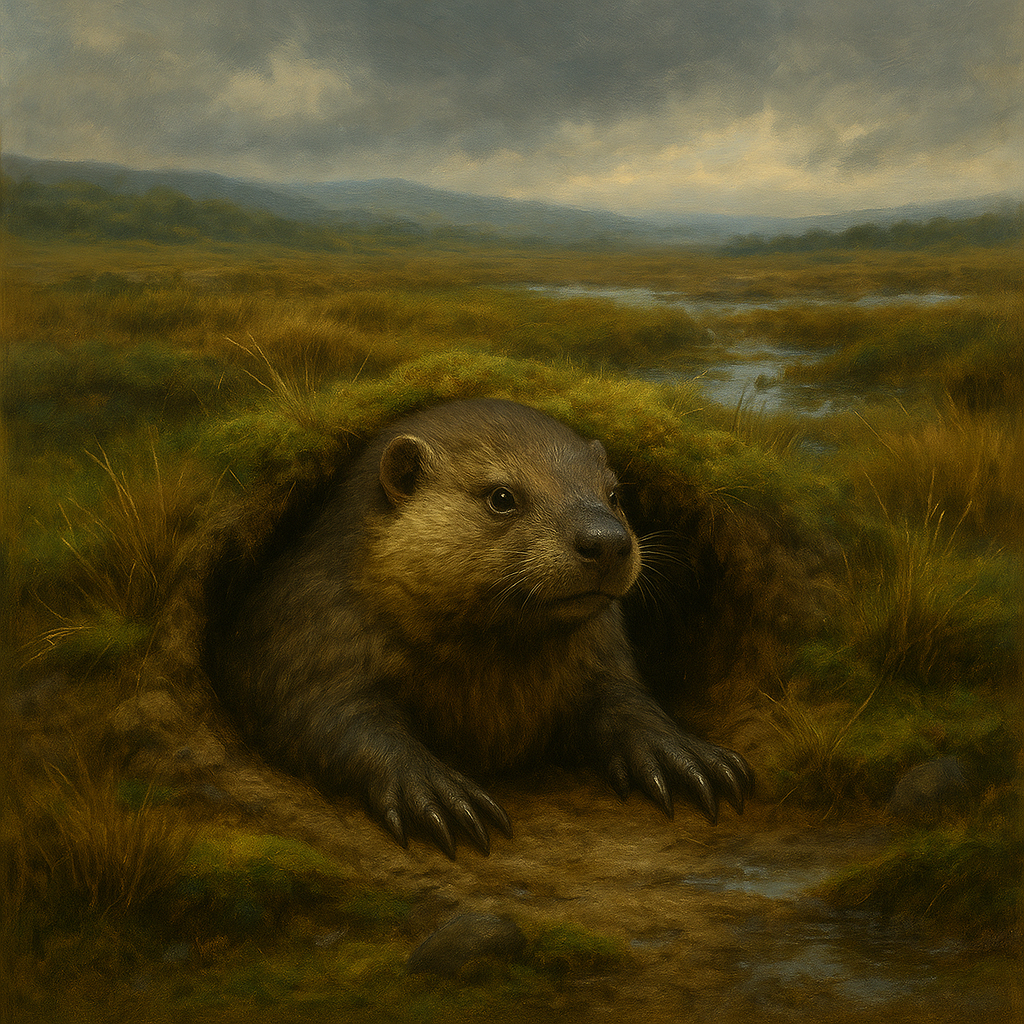Mudmappers
“If a Mudmapper feels safe, so should you.” -Old Grandgleam proverb, carved above hunter’s doors.
The Mudmapper is a sly, soil-loving creature found in Everwealth’s wetter regions, most famously within The Hungering Marsh and The Bog of Lies. A creature of unremarkable strength or stature, it has nonetheless earned respect not through such advantages, nor speed or scent, but through the brutal brilliance of its tunnelcraft; Thriving through its resourcefulness alone where even trained hunters aren't up to the challenge. Blending the sharp claws of a mole with the body of a squat groundhog, the Mudmapper may appear unimpressive, until it’s too late. It builds layered, intentional tunnel systems with cunning placements that flood, collapse, or snare depending on the creature’s goals. Folk hunters say if you see a Mudmapper’s den, tread with care, it may already be watching your steps.Basic Information
Anatomy
Compact and muscular, the Mudmapper measures roughly 1.5 feet from snout to tail, weighing 6 to 10 lbs. Its forelimbs are long and paddle-like with thick nails designed for scooping mud and stone alike. A snub, whisker-heavy face sits atop a thick neck, with slit-like ears and clouded eyes adapted to subterranean darkness. Their skin secretes a thin film of oily residue that waterproofs their coat, giving it a greasy sheen that protects them from marsh rot and fungal spores. Most Mudmappers are dull brown, grey, or black, camouflage against the mud they call home.
Genetics and Reproduction
They reproduce sexually and give birth to live young, typically 2-4 pups per litter. Gestation lasts about 6 weeks. Mating rituals involve synchronized tunnel races followed by shared food offerings.
Growth Rate & Stages
Pups are born blind and furless, reaching full maturity in 8-10 months. Juveniles practice digging and food caching in separate training burrows before being integrated into the family maze.
Ecology and Habitats
Mudmappers live in flooded forests, marshy ridgelands, and swamp-adjacent wetlands. While the Rubbleback sticks to dry forest loam and rocky ground, the Mudmapper prefers the squelch of soaked earth. Their tunnels form layered mazes that double as homes, food larders, escape routes, and traps. These aren’t random diggings; observers have noted deliberate positioning around slopes, runoff points, or root systems, sometimes triggering collapses that drown small prey. They often dig beneath travel paths and rootlines, placing false crusts above snare holes and marking escape routes only they remember. It is suspected they possess a memory for tunnel placement that rivals military maps.
Dietary Needs and Habits
Omnivorous, Mudmappers eat roots, grubs, fungi, and small invertebrates. They are known to drown prey by collapsing tunnels or diverting water routes. They cache food in deep, cold pockets wrapped in dry
Biological Cycle
Mudmappers remain active year-round, but dig deeper burrows and reduce activity in colder months. They shed fur in clumps during wet seasons and thicken their coat for winter damp.
Behaviour
Mudmappers are not confrontational, they’re ambushers, planners, and manipulators. They emerge rarely, preferring to watch from hidden vantage points or shallow vents. They’ve been seen to double back and use old trap holes to snap the ankle of a pursuing predator or fleeing hunter, giving them just enough time to vanish. Some say they can smell fear, or hear surface vibrations from miles off, exaggerations, perhaps, but not entirely without merit. Mudmappers cache food far underground in frost-tinged chambers that remain cold even in high summer, often storing everything from roots and bugs to bird eggs and raw meat. They will bury prey or scavenged carrion for later, and may aggressively rebury a cache if they detect that it's been sniffed or approached.
Additional Information
Perception and Sensory Capabilities
Mudmappers possess acute subterranean hearing and ground-vibration sensitivity, allowing them to detect movement and danger with uncanny precision. Though their eyesight is poor, they navigate through echolocation-like clicks and an advanced sense of spatial memory.
Scientific Name
Terratalpa sapientica.
Origin/Ancestry
Believed to be a cousin of the Rubbleback, the Mudmapper diverged as a marshland variant. It lacks the Rubbleback’s aggressive posture but shares high cognitive mapping traits and strategic survival.
Conservation Status
Common and locally revered. Considered a sign of safe passage or danger ahead. Not endangered, but increasingly hunted for their uncanny burrow maps or relocated for pest control purposes.



Comments